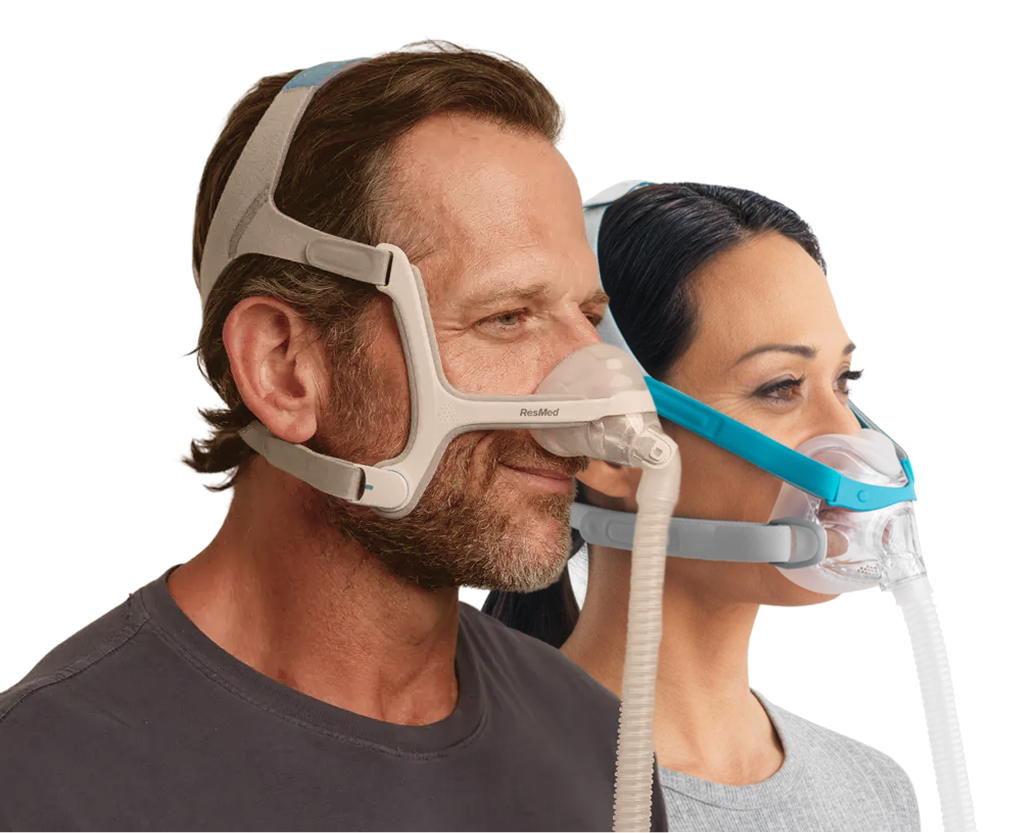For first-time adjustments, the recommended Resmed Airsense 10 adjust pressure typically fall between 6 cm and 20 cm H₂O. If you find the pressure uncomfortable, notice worsening sleep apnea symptoms, or receive new guidance from your doctor, you may need to make modifications. In this article, CPAP Discount Warehouse’ll cover how to adjust the pressure on the ResMed AirSense 10, explain situations How to adjust air pressure on Resmed Airsense 10? and share expert advice to help you get the most out of your CPAP therapy.
CPAP ERP Pressure Settings
EPR stands for Expiratory Pressure Relief. This is the name that ResMed has trademarked for its version of the exhalation relief feature, which is something that most CPAP machines have. Exhalation relief is an optional setting that lowers your incoming pressure level while you're exhaling. This helps make breathing feel more natural and has been shown to make therapy more comfortable.
The exhalation relief feature on any machine will lower your therapy pressure by 1 cmH2O for each level, up to a maximum of 3 cmH2O during exhalation. Some machines, like the ResMed AirMini, AirSense 10 and AirSense 11, even offer an option for EPR to be on full-time or only while Ramp mode is active.
If you breathe in at a pressure of 12 cmH2O and use an EPR setting of 2, you'll breathe out at a pressure of 10 cmH2O. If you're at 17 cmH2O with an EPR setting of 3, the pressure will drop to 14 cmH2O when you exhale, and so on. However, the pressure relief settings will never go below 4 cmH2O. This means that if you're at 6 cmH2O with level 3 EPR, it'll only go down to 4 cmH2O when you exhale, rather than 3 cmH2O.
The pressure in a CPAP machine is measured in centimeters of water pressure (cm H2O). Most CPAP machines have a pressure range of between 4 cm and 20 cm. The average pressure setting for people with OSA is about 9 cm H₂O.
>>> How to Change CPAP Pressure Settings?
Can you adjust the pressure on ResMed AirSense 10?
Yes, you can adjust the pressure level on the AirSense 10 to adapt to individual breathing patterns for optimal treatment. However, improper pressure settings can lead to discomfort or ineffective treatment. Always consult a doctor before making any changes to your prescribed pressure.
How to change air pressure on Resmed Airsense 10?
ResMed AirSense 10: a popular CPAP device for the treatment of obstructive sleep apnea. This device is an AutoSet device, which means it adjusts pressure in real time and adapts to the individual's breathing rhythm to ensure optimal treatment.
Since CPAP therapy can be started experimentally to find the most comfortable pressure for each patient, the pressure setting can be changed to determine the most appropriate value.
Please note that it is recommended to consult your doctor before making any changes to your CPAP therapy.
Most of the time, the pressure settings are decided by a doctor and put into the machine by a technician. However, patients can change these settings in the "My Options" menu on their ResMed machine. Here are the steps:
+ Step 1: Press and hold the Home button and Dial button at the same time. Keep doing this until a Clinical Menu appears.
+ Step 2: Access the Clinical Menu, highlight Settings and press the dial. The Settings menu is displayed.
+ Step 3: Scroll down the page and click on both the 'Max Pressure' and 'Min Pressure' lines
+ Step 4: Turn the dial to adjust the setting and press the dial to save the change.

>>>> APAP vs CPAP: Key Differences & Benefits for Sleep Apnea
ResMed AirSense 10 adjust pressure youtube
>>>> Before and After CPAP Machine
FAQs
Is it illegal to change CPAP pressure?
Although it is not illegal, changing CPAP pressure is not safe. It has been prescribed by your doctor for a specific reason. Adjusting it without your doctor's instructions may worsen your sleep apnea and possibly void the device's warranty.
How do I access clinical settings on ResMed AirSense 10?
To open the clinical menu, press and hold the dial and the Home button simultaneously for three seconds. The home screen will appear with the unlock icon in the upper right corner of the screen.
How do I access clinical settings on ResMed AirSense 10?
Settings vary depending on the device, but most CPAP devices have a pressure range from 4 cm H2O to 20 cm H2O. The average pressure setting for people with OSA is around 9 cm H2O. Show source. CPAP titration studies are the most common method for determining the appropriate pressure level.
If you want to learn more about the ResMed AirSense 10, our customer care team at cpapdiscount.au will be happy to help. They can help you choose the best CPAP machine for your needs. You can call us on 08 8166 0816 or email us at contact@cpapdiscount.au






